Discover 50 hidden attractions, cool sights, and unusual things to do in Slovakia. Don't miss out on these must-see attractions: Bratislava Castle (Bratislava), Grassalkovich Palace (Bratislava) or Devín Castle (Bratislava).
Below, you can find the list of the most amazing places you should visit in Slovakia.
Table of Contents
Bratislava Castle, Bratislava
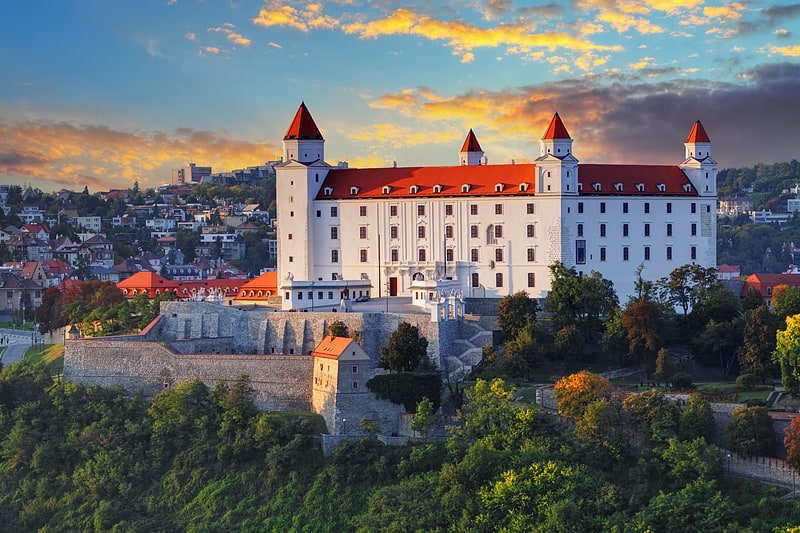
Also known as: Bratislavský hrad
Restored hilltop Baroque castle. Bratislava Castle is the main castle of Bratislava, the capital of Slovakia. The massive rectangular building with four corner towers stands on an isolated rocky hill of the Little Carpathians directly above the Danube river in the middle of Bratislava. Because of its size and location, it has been a dominant feature of the city for centuries.
The location provides excellent views of Bratislava, Austria and, in clear weather, parts of Hungary. Many legends are connected with the history of the castle.[1]
Address: Zámocká 2, 811 01 Bratislava
Grassalkovich Palace, Bratislava
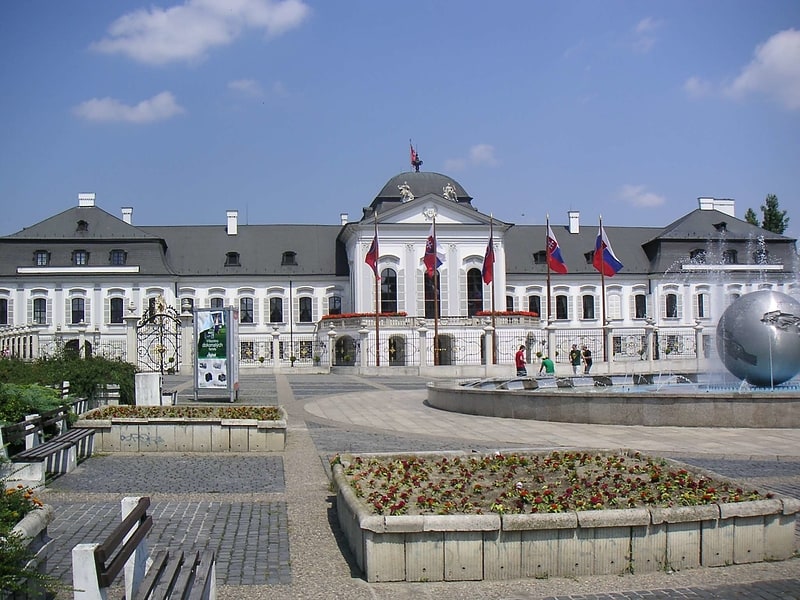
Also known as: Grasalkovičov palác
Palace in Bratislava, Slovakia. The Grassalkovich Palace is a palace in Bratislava and the residence of the president of Slovakia. It is situated on Hodžovo námestie, near the Summer Archbishop's Palace. The building is a Rococo-late Baroque summer palace with a French garden.[2]
Address: Hodžovo námestie 2978/1, 811 06 Bratislava-Staré Mesto
Devín Castle, Bratislava
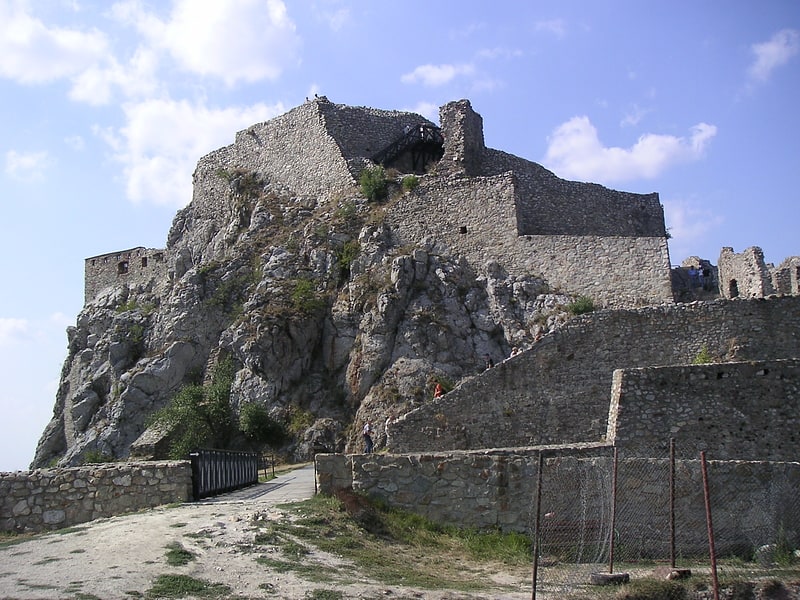
Also known as: Devínsky hrad
Castle ruins with Danube views. Devín Castle is a castle in Devín, which is a borough of Bratislava, the capital of Slovakia.[3]
Address: Muránská 1050/10, 841 10 Devín (Bratislava IV)
Štrbské pleso, Tatra National Park
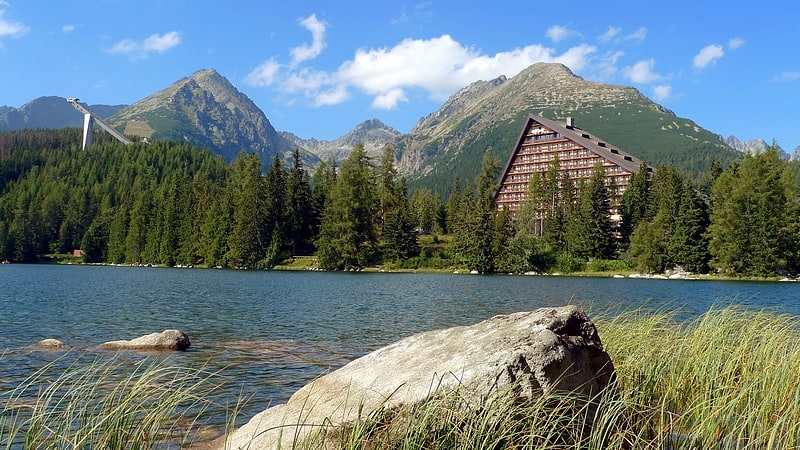
Lake in Slovakia. Štrbské pleso is a picturesque mountain lake of glacial origin and a top tourist destination in the High Tatras, Slovakia. It is the second-largest glacial lake on the Slovak side of the High Tatras, after Veľké Hincovo pleso. Maximum depth is 20 metres.[4]
Address: Štrbské pleso, 059 85 Štrbské Pleso
St Elisabeth Cathedral, Košice

Also known as: Dóm svätej Alžbety
Massive church with Gothic architecture. The Cathedral of St Elisabeth is a Gothic cathedral in Košice.
It is Slovakia's largest church and one of the easternmost Gothic cathedrals in Europe.
The record of the existence of Kassa (Slovak: Košice), dating from 1230, is connected with the existence of the rectory church. In the process of the settlement's transformation from a rural community into a town, all its periods of successes and failures have been reflected in St Elisabeth's Cathedral.
According to historical and archaeological sources, the present-day cathedral was built on the place of an earlier church also consecrated to St Elisabeth of Hungary. It was referred to in documents of 1283 and 1290, in which the bishop of Eger Andrew II exempted Košice parish from the dean's sphere of jurisdiction.[5]
Address: Hlavná 30/54, 040 01 Staré Mesto (Košice I)
Rysy, Tatra National Park

Highest mountain in Poland for trekking. Rysy is a mountain in the crest of the High Tatras, eastern part of the Tatra Mountains, lying on the border between Poland and Slovakia. Rysy has three summits: the middle at 2,501 m; the north-western at 2,500 m; and the south-eastern at 2,473 m. The north-western summit is the highest point of Poland and belongs to the Crown of Polish Mountains; the other two summits are on the Slovak side of the border.[6]
Address: Poland and Slovakia border, Tatra National Park
Starý Smokovec, Tatra National Park

Town in Slovakia. Starý Smokovec is a part of the town of Vysoké Tatry in northern Slovakia in the Tatras. Its name is pronounced approximately "Star-EE Smoke-oh-vets", meaning "Old Smokovec".
Starý Smokovec is a popular resort for skiing and hiking. It also forms the junction of the Tatra Electric Railway train line, connecting Poprad, Tatranská Lomnica and Štrbské Pleso.
Amongst the more important buildings in the district are the sanatorium and the Grand Hotel. It is connected by the Starý Smokovec–Hrebienok funicular to the small ski resort of Hrebienok at 1285 m.[7]
Manínska Gorge, Považská Bystrica
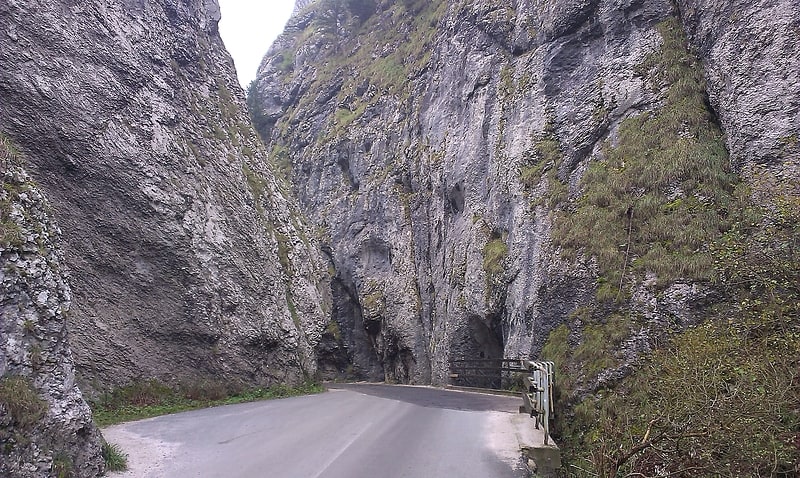
Also known as: Manínska tiesňava
Nature reserve. Manínska Gorge is a national nature reserve, and the narrowest canyon in Slovakia.
It lies in the Súľov Mountains, 6 km (3.7 miles) from Považská Bystrica. It is a place of great tourist interest, because of its wild and rare flora and fauna.[8]
Jazero, Košice
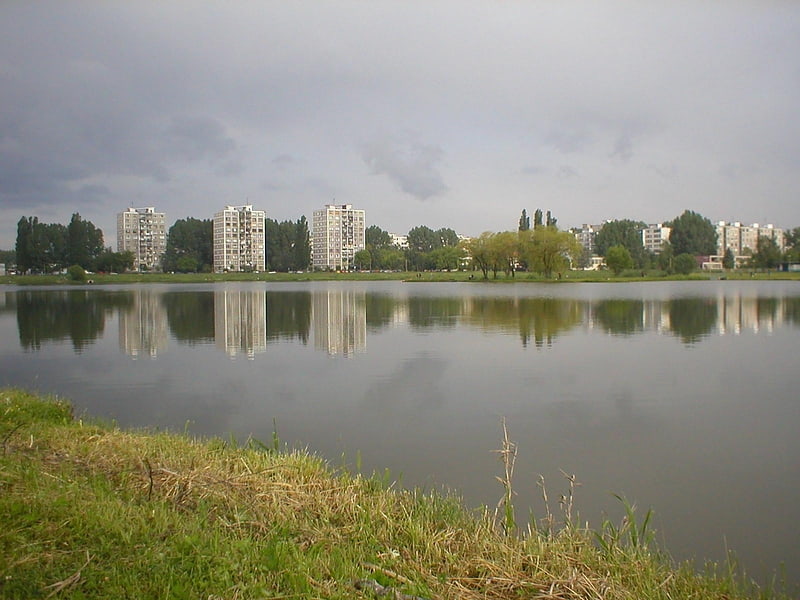
Reservoir. Jazero is a reservoir, which was created in the second half of the 20th century, located in the Nad jazerom borough of Košice, Slovakia.[9]
Veľký Rozsutec, Malá Fatra National Park
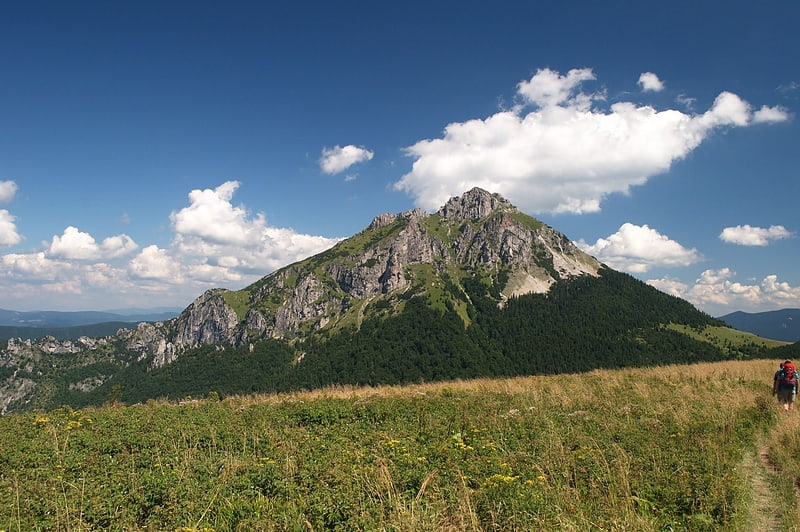
Mountain in Slovakia. Veľký Rozsutec is a mountain situated in the Malá Fatra mountain range in the Žilina Region, Slovakia. The peak is situated in the north part of Malá Fatra called Krivánska Malá Fatra and is part of the Malá Fatra National Park and Rozsutec National Nature Reserve.
Veľký Rozsutec and the surrounding area are home to many endangered species of plants and animals, some of which are endemic, as well as rare karst terrain.[10]
Košice Zoo, Košice
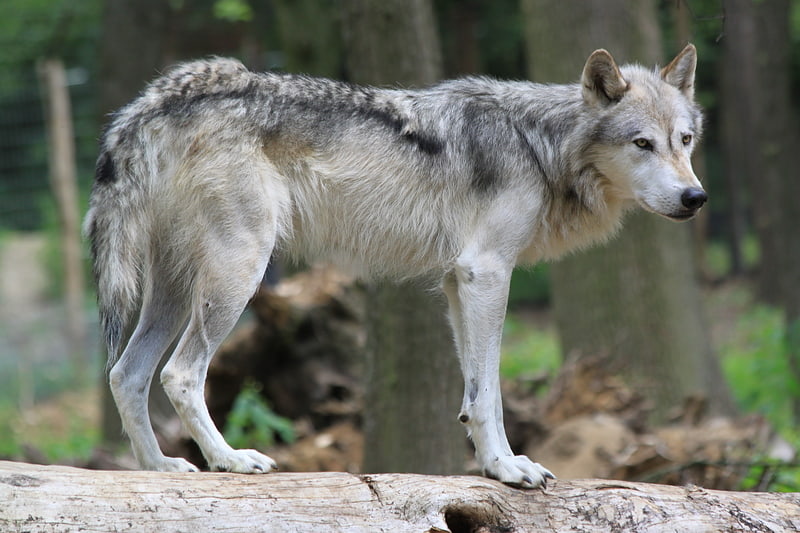
Also known as: Zoologická záhrada Košice
Large zoo for European and Asian fauna. The Košice Zoo is a zoo in Košice, Slovakia in the local city part of Kavečany. Encompassing 292 hectares, it is the largest zoo in Slovakia and the third largest in Europe, though visitors are allowed only in about one third of this area. Another area around the visitors area is preserves as the Carpathian Biom with many free living protected species of Slovak fauna and flora, including Imperial Eagle, Black Storc, and Raven. The zoo hosts about 250,000 visitors each year. Inside the zoo is a large Slovak Jurassic Park and many educational trails.
Animal collection:
As of January 1, 2020 the zoo kept approximately 1250 specimens in 280 species - the second largest collection in Slovak zoos.
Most important species in collection with high successful reproduction:
Cuban Boa, Humboldt Penguin, Toco toucan, Silvery-Checked Hornbill, Himalaya Monal pheasants, European Brown Bear (official World Guinness Book recorded of 5 cubs born and reared in one litter in the zoo in 2002), Przewalski wild horse (3 animals released back to wilderness in Mongolia), Blasboock, Kafue red lechwe, Siberian ibex, Alpine Chamois, European Bison, Hutsul horse (protected horse form of Carpathians).
Another important species in collection:
Dwarf crocodiles, Andean Condor, Kamchatka eagle, Australian sarus crane, Mantchurian Crane, Harbor seal, Red Panda, Pallas CAT, North Chinese Leopard, Maneless zebra, Siberian wapiti, Mishmi takin.[11]
Šútovský vodopád, Malá Fatra National Park
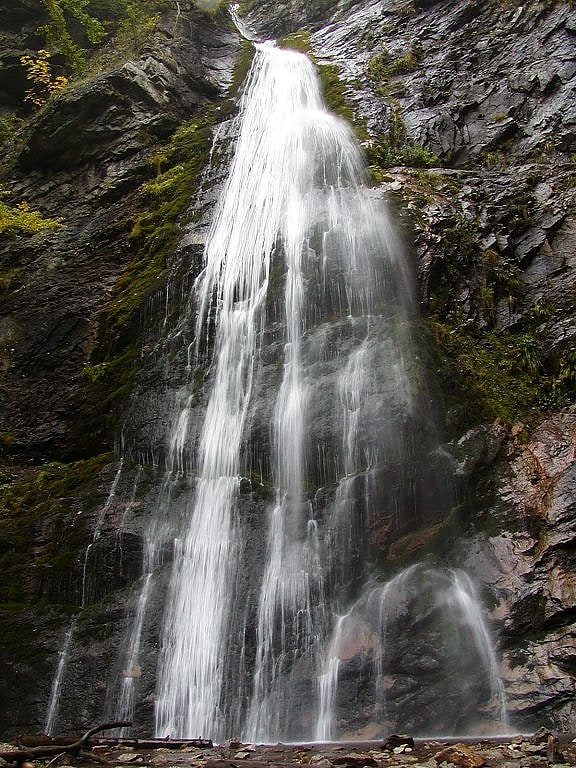
Waterfall in Slovakia. Šútovský vodopad is a waterfall in Slovakia located in the Malá Fatra mountains, 4 kilometres north of the town of Šútovo.[12]
Kalvária Banská Štiavnica, Banská Štiavnica
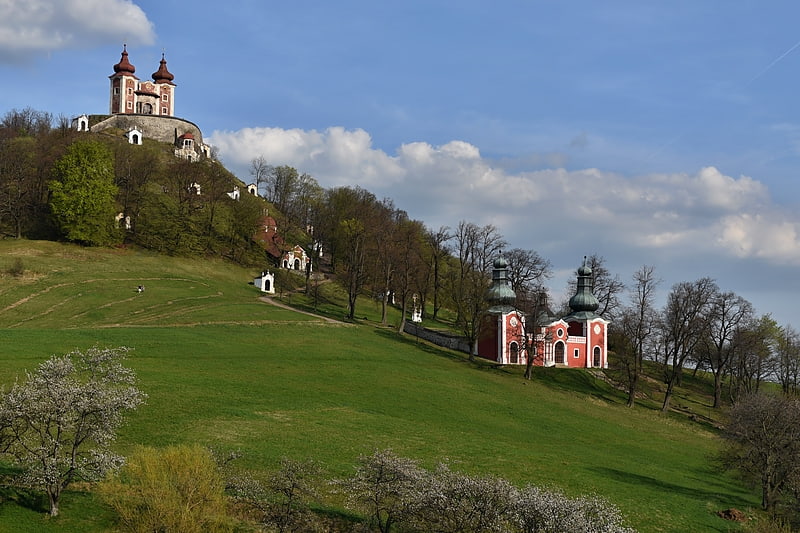
Also known as: Kalvária
Monument in Banská Štiavnica, Slovakia. Calvary Banská Štiavnica is a late-Baroque calvary, architectural and landscape unit in Slovakia, unique in extent and content, formed in the years 1744–1751.[13]
Address: Pod Kalvariou, 969 01 Banská Štiavnica
Co-Cathedral of St. Nicholas, Prešov
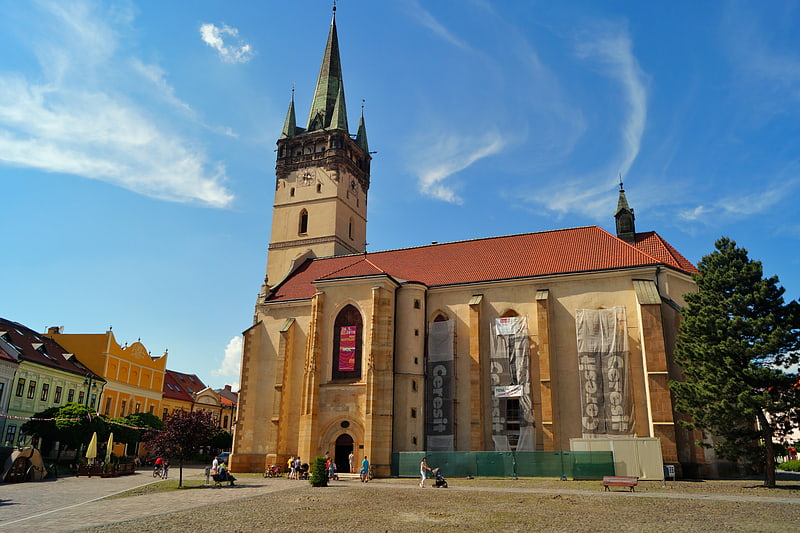
Also known as: Konkatedrála svätého Mikuláša
Cathedral in Prešov. The Co-Cathedral of Saint Nicholas in Prešov is one of the oldest and most important churches in Slovakia. External dimensions of concathedral are 54.7 meters in length, 34.45 in width. The height of indoor nave is 16 m and tower reaches a height of 71 meters. The temple is a Late Gothic hall-type church with three naves.[14]
Address: Hlavná 2941/141, 080 01 Prešov
Červený Kláštor Monastery, Pieniny National Park
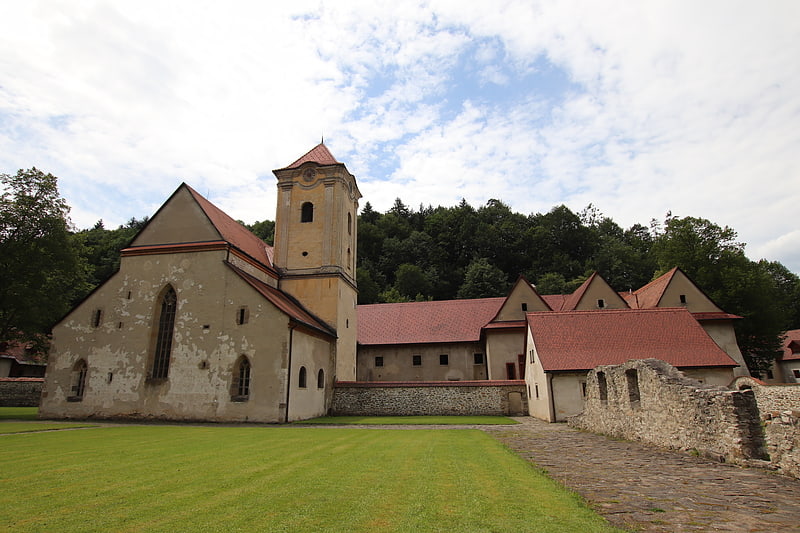
Also known as: Červený kláštor
Monastery. Červený Kláštor is a medieval monastery located in Slovakia. It is located near the village of Červený Kláštor within the Pieniny Mountains, next to the Dunajec River.[15]
Address: Pod lipami 20, 059 06 Červený Kláštor
Nový zámok, Banská Štiavnica

Castle in Banská Štiavnica, Slovakia. Nový zámok is a castle in Banská Štiavnica, Slovakia. The castle is located on a hill south of the city center at an altitude of 630m above sealevel, marking the highest point of the city center.[16]
Address: Novozámocká 22, 969 01 Banská Štiavnica
Basilica of St. James, Levoča
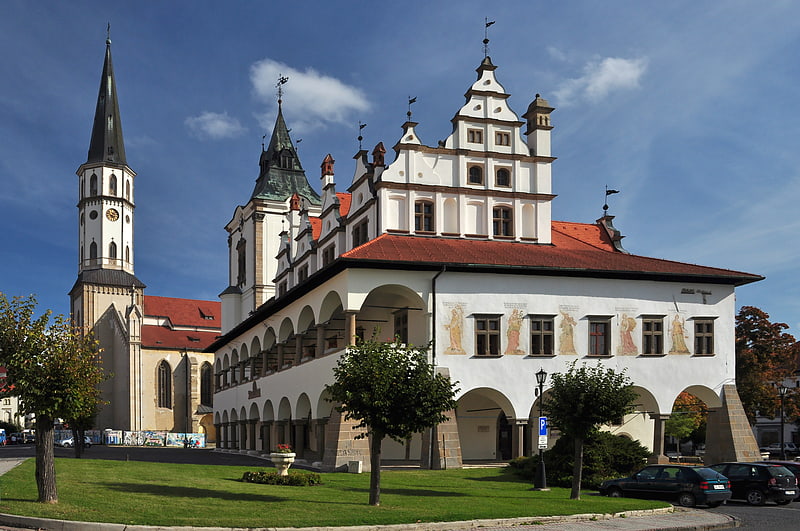
Also known as: Bazilika svätého Jakuba
Catholic church in Levoča, Slovakia. The Basilica of St. James is a Gothic church in Levoča, Prešovský kraj, Slovakia. Building began in the 14th century. It is a Catholic parish church, dedicated to James the Apostle.
The interior features several Gothic altars, including as the main altar the world's tallest wooden altar at 18.62 metres (61.1 ft) by the workshop of Master Paul of Levoča, completed in 1517. The church, the second largest in Slovakia, also houses well-preserved furniture and art work. The steeple dates from the 19th century. The church was added to the UNESCO World Heritage Site Levoča, Spiš Castle and the associated cultural monuments in 2009. It is also a Slovak National Monument. In 2015, Pope Francis declared the church a Basilica minor.[17]
Address: Námestie Majstra Pavla 53, 054 01 Levoča
St. Catherine's Church, Banská Štiavnica
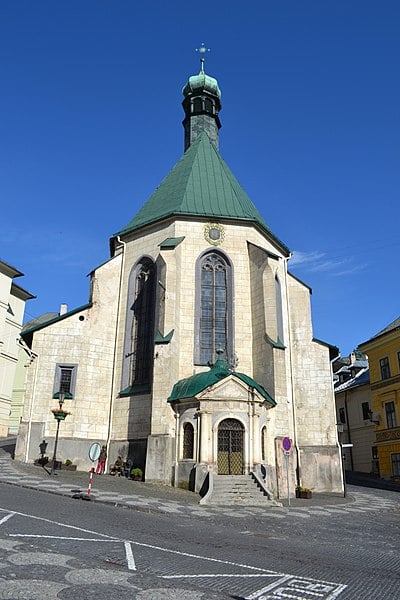
Also known as: Kostol svätej Kataríny
Temple in Banská Štiavnica, Slovakia. St. Catherine's Church is a Late Gothic church in the town in Banska Stiavnica, Slovakia. It is dedicated to Saint Catherine of Alexandria.
The construction is dated between years 1488 and 1491 and the church was consecrated in 1500. Fifty years later it was promoted to the status of a parish church. The year 1491 is stated also as the year when the church was established. Older resources indicate that the construction began in 1443 or 1444, what corresponds to time, when citizens of Banska Stiavnica moved to the area of nowadays town, after the old town was destroyed. From 1580 to 1675, during the period of the Reformation, it belonged to the Lutheran church. In 1658 mass began to be preached in Slovak, which is why it is called "the Slovak church."[18]
Address: Nam. sv. Trojice 3, 969 01 Banská Štiavnica
Nitra Castle, Nitra
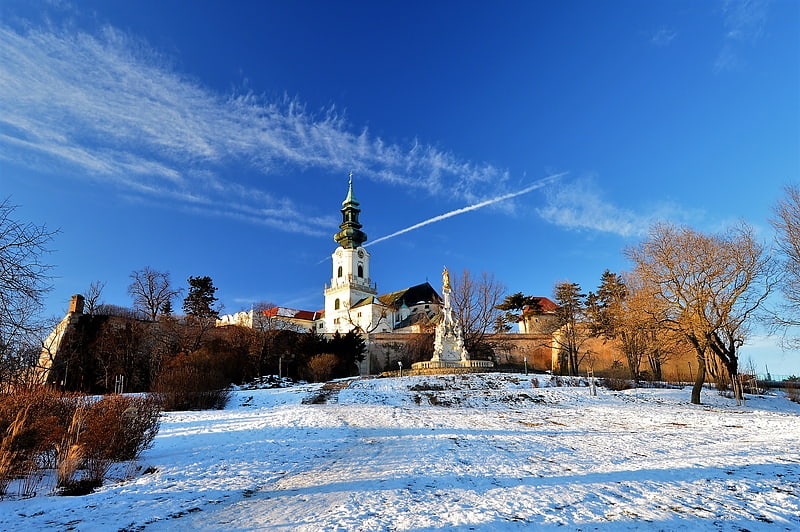
Also known as: Nitriansky hrad
Castle in Nitra, Slovakia. Nitra Castle is a castle located in the Old Town of Nitra, Slovakia. It dominants the city and is a national cultural monument. It is the seat of the Diocese of Nitra.[19]
Address: Kráľovská cesta 1007/4, 949 01 Nitra
Trenčín Castle, Trenčín
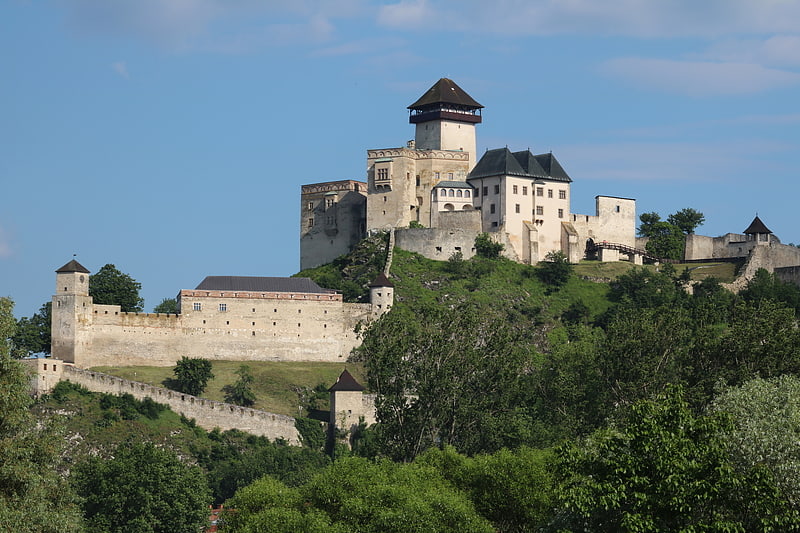
Also known as: Trenčiansky hrad
History museum in an ancient castle. The Trenčín Castle is a castle above the town of Trenčín in western Slovakia.[20]
Address: Matusova 19, 912 50 Trencin
Demänovská Cave of Liberty, Low Tatras
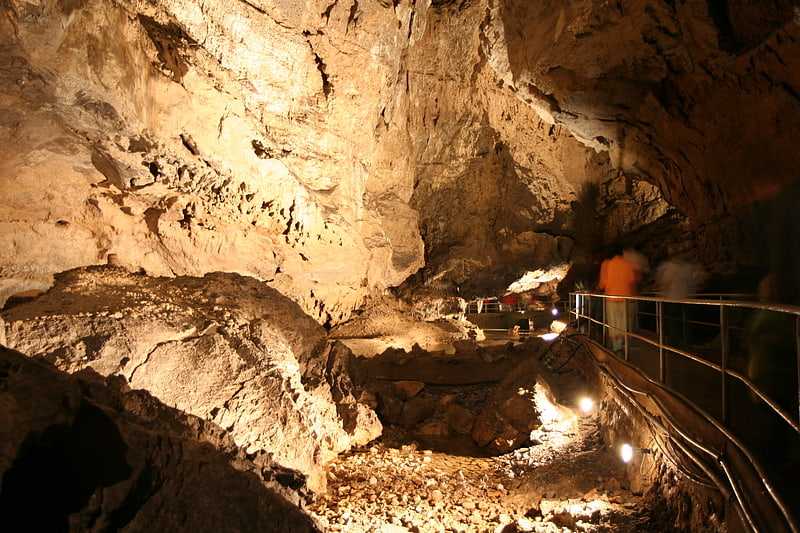
Also known as: Demänovská jaskyňa slobody
Cave in Demänovská Dolina, Slovakia. Demänovská Cave of Liberty is a karst cave in Low Tatras, Slovakia. The cave was discovered in 1921, and, opened to the public in 1924. It is the most visited cave in Slovakia.
The public entrance is at an altitude of 870 metres (2,850 ft). The entire cave has a length of 8,126 metres (5.0 mi), but, only 1,800 metres (1.1 mi) are open to the public.
Cave bear bones were found in a passage now named Bear's Passage (Slovak: Medvedia chodba).
Large domes have been created with the largest being the Great Dome, which is 41m high, with a length of 75m and width of 35m.[21]
Address: Low Tatras, Low Tatras
Andrej Bagar Theatre, Nitra
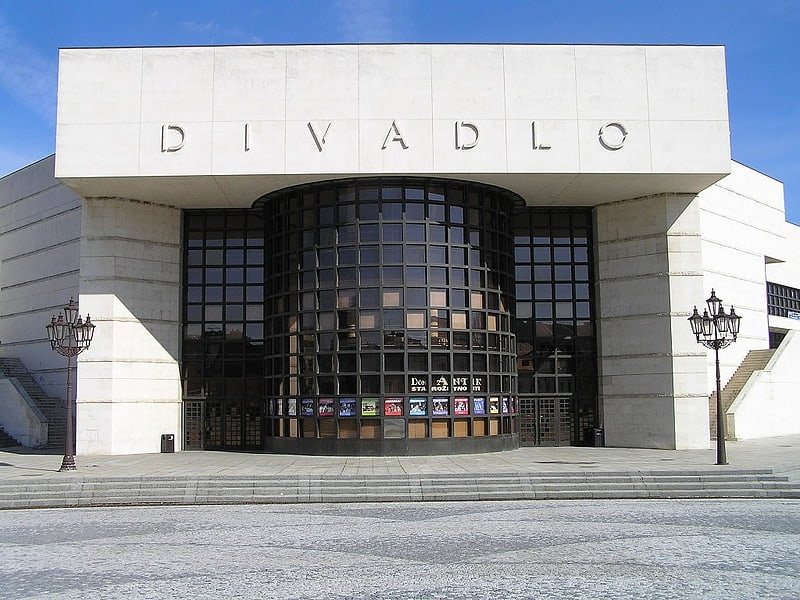
Theatre. The Andrej Bagar Theatre is a theatre located in Nitra, Slovakia. It opened in 1949. The theatre was known as Nitrianske krajové divadlo and Krajové divadlo Nitra before being named after actor Andrej Bagar in 1979. Various productions from the theatre have been recognised in the annual DOSKY Awards. The director of the theatre from 2001 was Ján Greššo, until being succeeded by Jaroslav Dóczy in 2016.[22]
Basilica of the Exaltation of the Holy Cross, Kežmarok

Catholic church in Kežmarok, Slovakia. The Basilica minor of the Exaltation of the Holy Cross is a Late Gothic three-nave Catholic church located in the town of Kežmarok in the Spiš region of eastern Slovakia.[23]
Čachtice Castle, Little Carpathians Protected Landscape Area
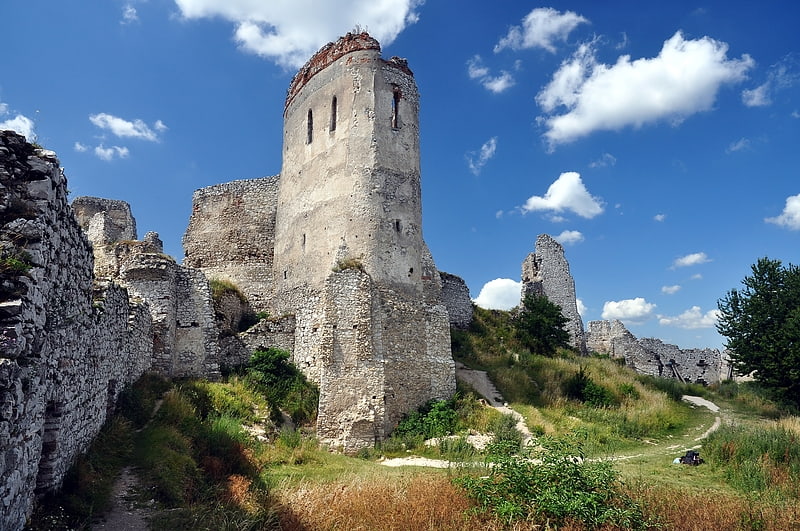
Also known as: Čachtický hrad
Castle in Čachtice, Slovakia. Čachtice Castle is a castle ruin in Slovakia next to the village of Čachtice. It stands on a hill featuring rare plants, and has been declared a national nature reserve for this reason. The castle was a residence and later the prison of the Countess Elizabeth Báthory.
Čachtice was built in the mid-13th century by Kazimir from the Hont-Pázmány gens as a sentry on the road to Moravia. Later, it belonged to Matthew Csák, the Stibor family, and then to Elizabeth Báthory. Čachtice, its surrounding lands and villages, was a wedding gift from the Nádasdy family upon Elizabeth's marriage to Ferenc Nádasdy in 1575.
Originally, Čachtice was a Romanesque castle with an interesting horseshoe-shaped residence tower. It was turned into a Gothic castle later and its size was increased in the 15th and 16th centuries. A Renaissance renovation followed in the 17th century. In 1708 the castle was captured by the rebels of Francis II Rákóczi. It was neglected and burned down in 1799. It was left to decay until it was turned into a tourist attraction in 2014.[24]
Stratenec, Malá Fatra National Park

Mountain in Slovakia. Stratenec is 4,962 feet AMSL high mountain in the Lesser Fatra.
This limestone mountain covered with dwarf-pines is situated in west part of the main crest of Krivanska Mala Fatra mountain range.
It is accessible directly on the red marked trail between Maly Krivan and Biele skaly. From the mountain Maly Krivan it is divided by saddleback Priehyb and from Biele Skala by the saddleback Vrata.
You can also reach it by the blue marked trail from Krasnany via the valley Kur. The northern rocky part of the hill hides 443 feet (135 m) long Old cave of Stratenec and 207 feet (63 m) long Kukurisova cave. There is also 115 feet (35 m) deep chasm. There is no marked trail to the rocky part and the access is restricted to the tourists. The area of the peak and the northern slopes are part of protected area Suchy.
The opposite southeastern slopes of Stratenec lead to the sucanska valley. Stratenec can be reached from that side by the yellow marked trail from Lipovec or by the green trail from Turcianske Klacany via Suchy.[25]
Dražovce church, Nitra

Also known as: Kostol svätého Michala archanjela
Dražovský kostolík is one of the oldest churches in Slovakia, dating from the 11th century, located at Dražovce. It is a typical early Romanesque architecture single-nave building with thick enclosure walls and small roundish apse. It is no longer used. Research from 1947 and 1948 discovered 55 graves around the church.
Dražovce church is depicted on the Slovak postage stamp of the highest face-value and was also formerly depicted on the Slovak 50 SKK note before the changeover to € currency.[26]
Address: Pod kostolíkom 35-33, 949 01 Nitra-Dražovce
Budatín Castle, Žilina

Also known as: Budatínsky hrad
13th-century landmark with guided tours. The Budatín Castle is a castle in north-western Slovakia, near the city of Žilina, where the Kysuca river flows into the Váh river.[27]
Address: Topolova 1, 010 03 Zilina
Museum of Danube Komarno, Komárno

Also known as: Podunajské múzeum v Komárne
Museum in Komárno, Slovakia. The Museum of Danube in Komárno is a cultural and natural history museum in Komárno, Slovakia. The museum processes and makes accessible documents on the development of nature and society of the southern part of the Danube lowland and of Hungarian nationality culture in the Slovak Republic.
The Museum in Komárno was open in 1886 and was active until end of World War II, within the domain of museum and educational societies. The most prominent was the Jókai Educational and Museum Society, active in 1911-1945. Since 1948 it is housed in the building of the District Museum Society at Komárno. In 1949 it was renamed the Danube Museum.[28]
Address: Palatínova 1028/13, 945 01 Komárno
Ďumbier, Low Tatras
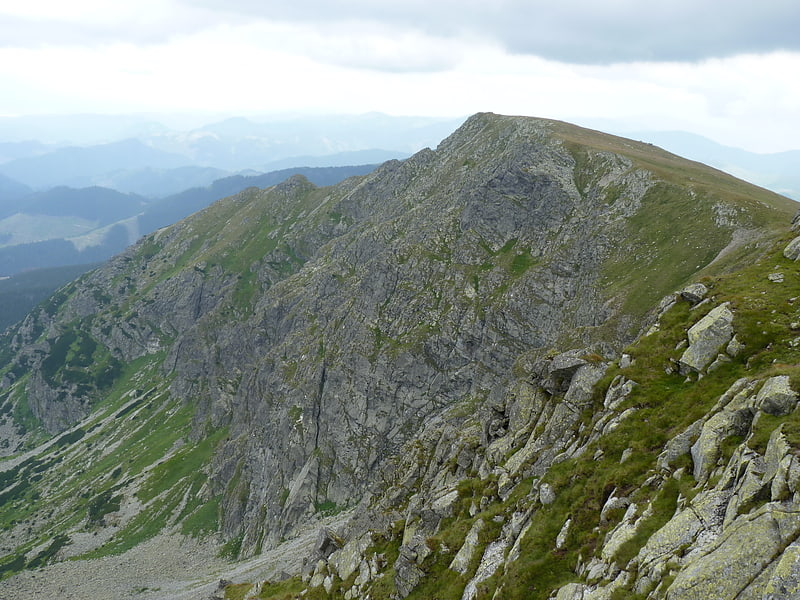
Mountain with hiking trails and a chalet. Ďumbier is the highest mountain in the Low Tatra range, in central Slovakia. Despite the remains of medieval mines, the massif is now protected as a part of the Low Tatras National Park.
The easily accessible summit offers a scenic view of High Tatra, Liptov and the valley of Hron. A chalet called Chata M. R. Štefánika is situated under the summit (1,740 m). Ďumbier, as well as the nearby Chopok mountain, can be reached following the hiking trails either from the north (from the Demänovská dolina and Jánska dolina valleys) or from the south (from the bus stop Trangoška).[29]
Lietava Castle, Žilina

Also known as: Lietavský hrad
Castle in Lietava, Slovakia. Lietava Castle is an extensive castle ruin in the Súľov Mountains of northern Slovakia, between the villages of Lietava and Lietavská Svinná-Babkov in the Žilina District.[30]
Museum of the Slovak Village, Martin
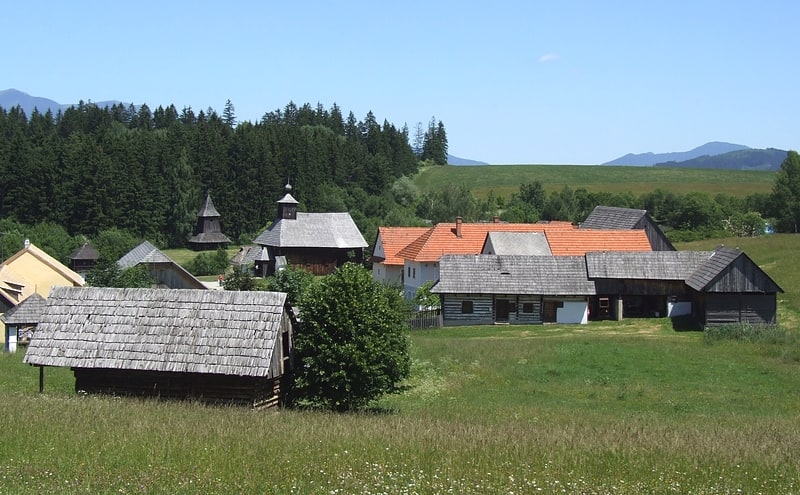
Also known as: Múzeum slovenskej dediny
Museum in Martin, Slovakia. The large open-air Museum of the Slovak Village is situated on the outskirts of the northern city of Martin in Slovakia.[31]
Address: Jahodnícke háje, Martin
Holy Trinity Cathedral, Žilina
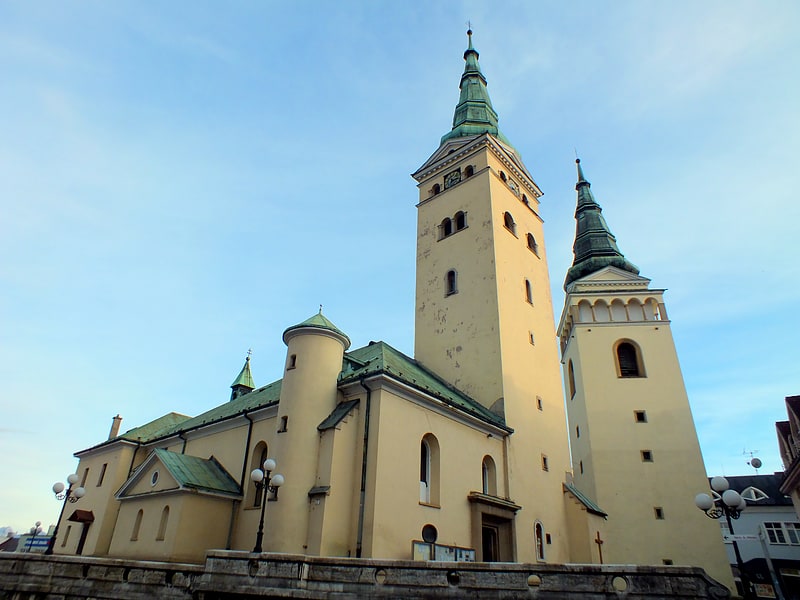
Also known as: Katedrála Najsvätejšej Trojice
Church in Žilina, Slovakia. The Church of the Holy Trinity, since February 2008 Holy Trinity Cathedral is a Roman Catholic church in Žilina, Slovakia. It is one of the town's most significant monuments. Together with the Burian's Tower it creates the typical skyline of the town.[32]
Address: Horný Val 1, Žilina
Military History Museum Piešťany, Piešťany
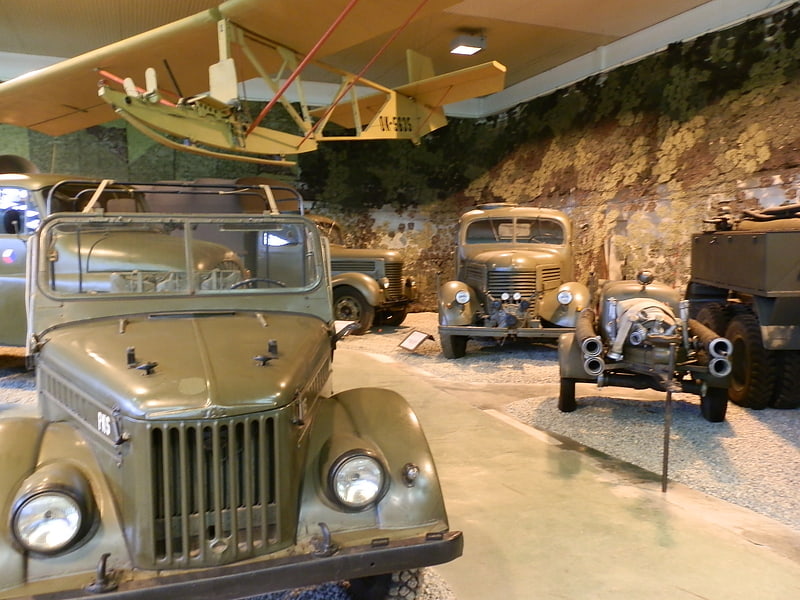
Military History Museum Piešťany is a military museum in Piešťany in western Slovakia.
It is located in Piešťany Airport in buildings of former military base. It was opened in 2004. Expositions of the museum are focused on aircraft and vehicles of the Czechoslovak army between years 1945 and 1992. As of 31 December 2019, the Piešťany Museum Department registered 9,272 collection items in the collection fund, which are part of 22 museum collections.
Exhibits include several Migs-29, many Migs-21, Migs-23, different Sukhoi aircraft, several T-34, T-55 and T-72 tanks and many others vehicles and aircraft which served in Czechoslovak and Slovak armies.[33]
Demänovská Ice Cave, Low Tatras
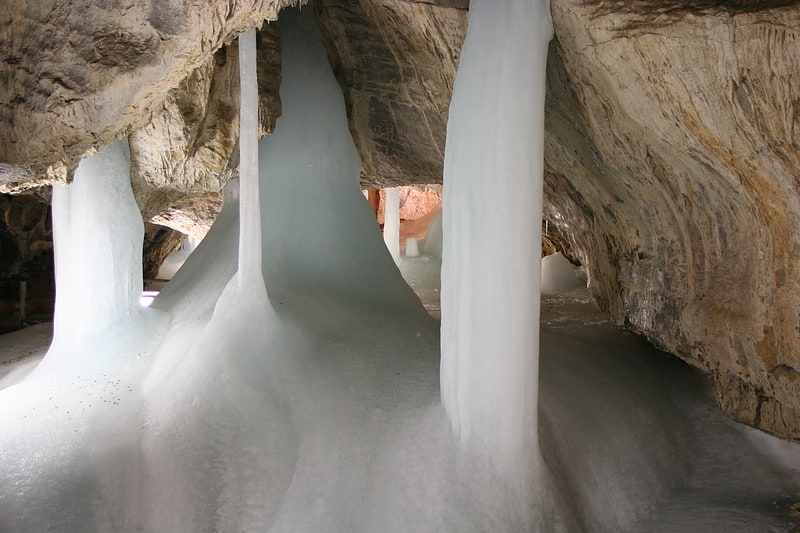
Also known as: Demänovská ľadová jaskyňa
Tourist attraction in Demänovská Dolina, Slovakia. Demänovská Ice Cave or Demänovská ľadová jaskyňa is an ice cave in the Demänovská Valley in Slovakia. It was first mentioned in 1299 and is one of oldest known caves in Europe. After the opening of Demänovská jaskyňa Slobody in 1924, interest in this cave declined. It was reopened to the public after the reconstruction of wooden stairs and electrical lighting in 1952, with 680 m accessible out of the 1,975 m. Currently, the route for visitors is 850 m long and takes about 45 minutes to traverse.[34]
Hronsek, Banská Bystrica
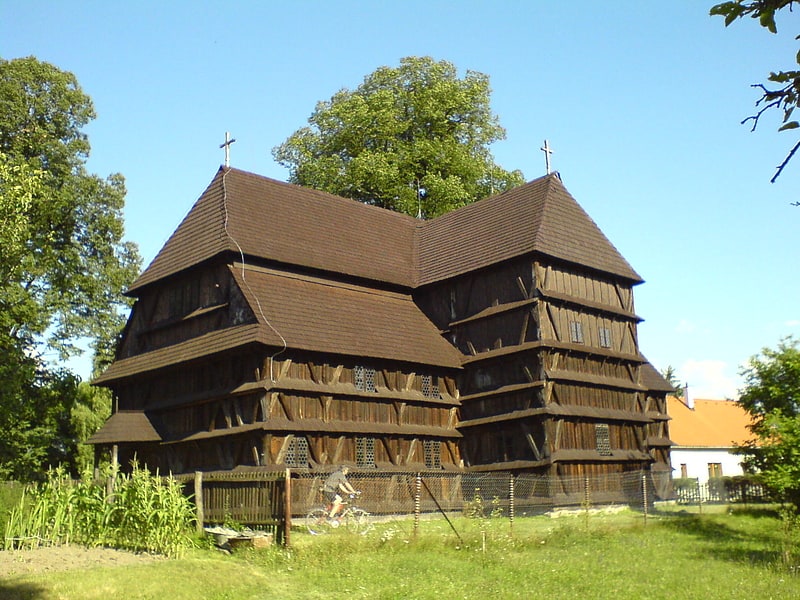
Also known as: Drevený artikulárny kostol
Lutheran church in Hronsek, Slovakia. Wooden articular church of Hronsek is a Lutheran church situated in the village of Hronsek, in Slovakia.[35]
Address: A. H. Krchmeryho 8, 976 31 Hronsek
SNP Square, Banská Bystrica
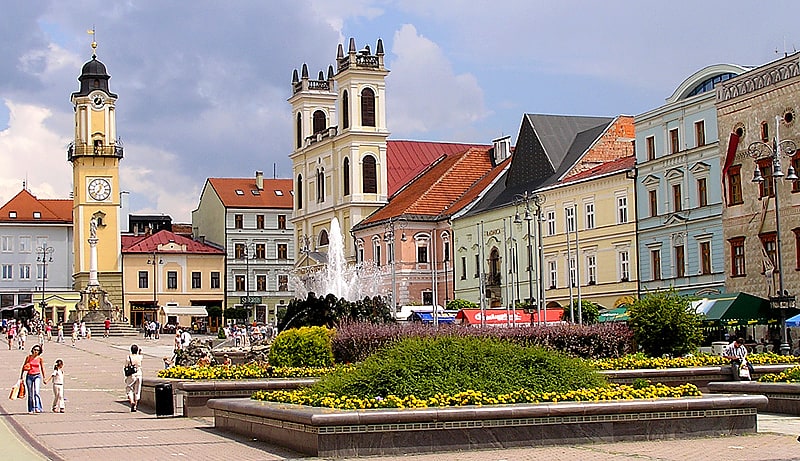
Also known as: Námestie SNP
Tourist attraction in Banská Bystrica, Slovakia. Slovak National Uprising Square, or SNP Square is an area in central Banská Bystrica, Slovakia, named after the insurgency of 1944. It has been the hub of the city's life and a prestigious address for more than 600 years. During the 20th century, the square saw periodic mass gatherings celebrating first national independence, then the defeat of the uprising after which it is now named, and finally the memory of the event. Dotted by cafés, restaurants, and small stores, it is a popular place for the locals to linger, and a tourist attraction notable for its historical buildings, and visual appeal. The whole square is a free public WiFi hotspot.[36]
Synagóga, Trenčín
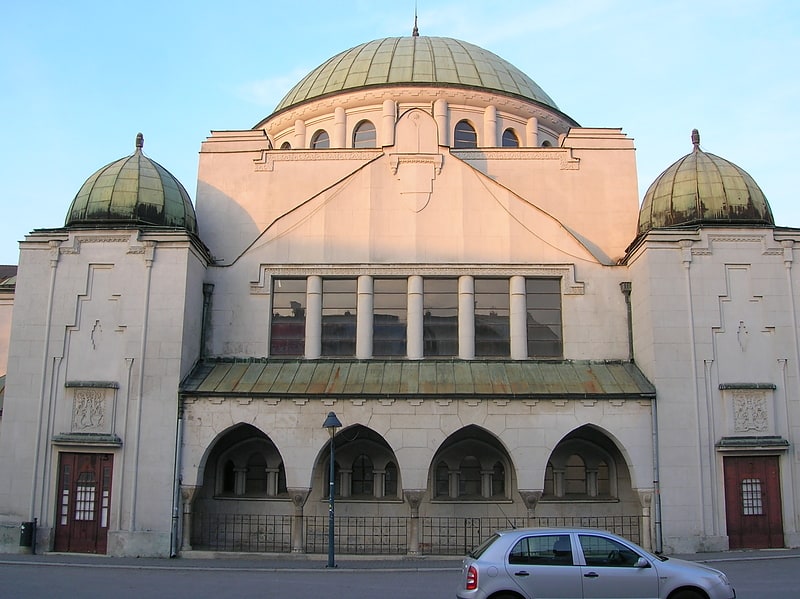
Synagogue in Trenčín, Slovakia. The Trenčín Synagogue is a building in the city of Trenčín in Slovakia.[37]
Address: Mierové námestie, Trenčín
Plavecký Castle, Little Carpathians Protected Landscape Area
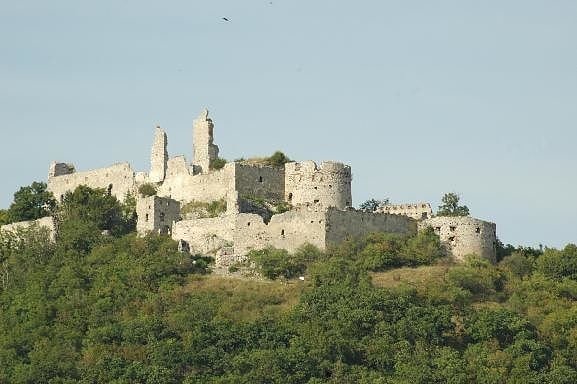
Plavecký Castle is a ruined medieval castle in the municipality of Plavecké Podhradie in the Bratislava region of south-west Slovakia. It is located on the western foothills of the Little Carpathians.[38]
Address: Plavecke Podhradie, 906 36 Plavecke Podhradie
Považský hrad, Považská Bystrica
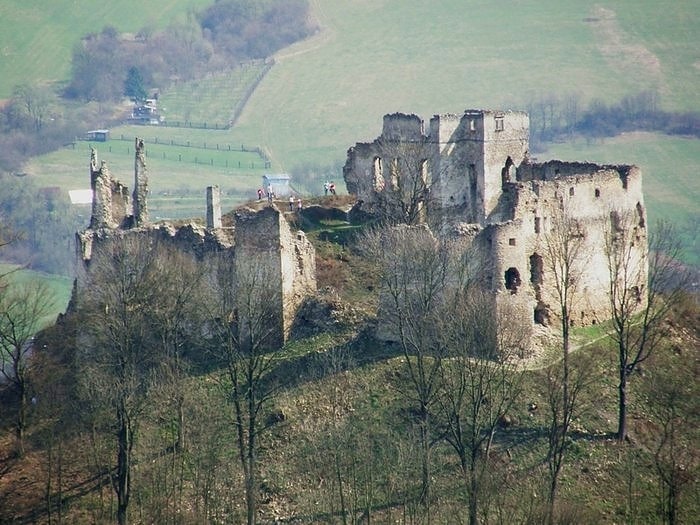
Castle in Považská Bystrica, Slovakia. Považský hrad is a ruin of medieval castle on the right side of the river Váh, near Považská Bystrica in Slovakia. It is thought to be the essential part of silhouette of Považie and Upper Váh region especially. It is built on a cliff 497 meters above sea level. It was one of the most important castles guarding the valley of the river Váh. At the peak of its fame it was home of around 400 people. It is famously known as an "eagles nest" of the important Hungarian noble family of Podmanitzky.[39]
Church of the Visitation of the Virgin Mary, Považská Bystrica
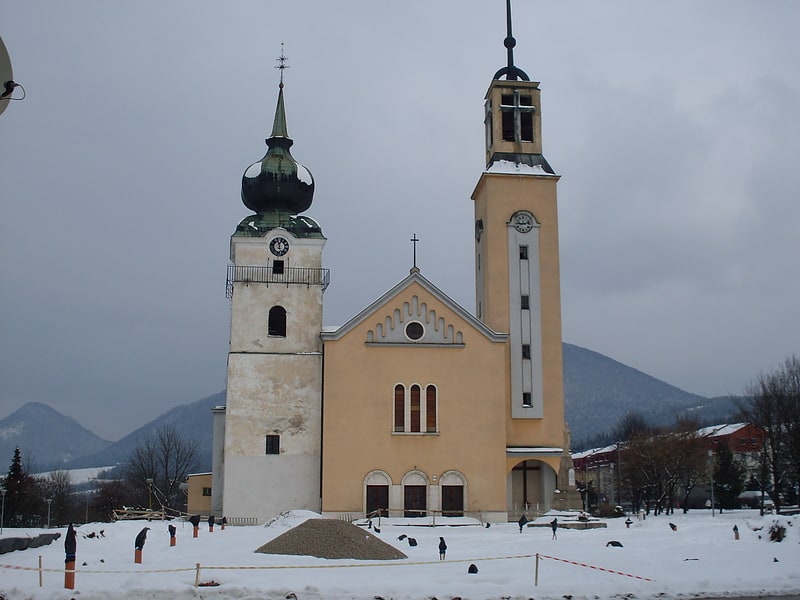
Also known as: Kostol Navštívenia Panny Márie
Church in Považská Bystrica, Slovakia. Kostol Navstivenia Panny Marie lies in the town centre in Považská Bystrica. It was built in the 14th century by János Podmanitzky owner of castle Považský hrad. It was rebuilt in 1940 to satisfy the need for capacity, leaving only presbytery, tower and northern part of girting walls of the old church. Nowadays paned windows were designed by Slovak artists Vincent and Viera Hloznik. In the entrance hall of the church is placed the gravestone of Raffael Podmaitzky, Szigmund Balassa and his wife Alzbeta Zborowska.[40]
Address: Stred 44/1, 017 01 Považská Bystrica
Fortress of Komárno, Komárno

Fortress of Komárno, in Slovakia, is the central part of the Komárno fortification system at the confluence of the Danube and Váh rivers.[41]
St Francis Xavier Cathedral, Banská Bystrica
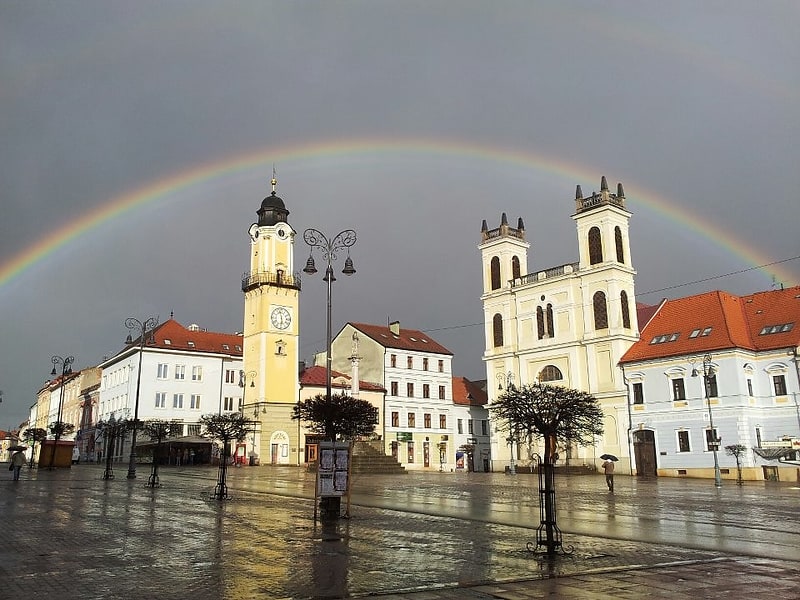
Also known as: Katedrála svätého Františka Xaverského
Cathedral in Banská Bystrica, Slovakia. The Francis Xavier Cathedral, Banská Bystrica is a cathedral at Slovak National Uprising Square in Banská Bystrica, Slovakia.
There was a first mention of a gothic chapel at this spot in the so-called Königsberger's testament from 1503. It was the only place of Roman Catholic worship during the 16th century, when Banská Bystrica was in the hands of the Protestants.
In 1647 a few Jesuits settled here and started the Catholic reform of the town and its neighbourhood. During the years 1695–1701 they built their own college on the Königberger's site. They started the building of the church in 1702 as a copy of the Church of the Gesu in Rome.
The construction came to a halt when in 1703 when the town was occupied by the anti-Habsburg troops of Francis II Rákóczi. The building resumed in 1709 and on 24 September 1715 the church of St. Francis Xavier was consecrated. At that time, the church was a baroque building with a single nave and six chapels. The façade lacked a tower. In 1773 the Jesuits had to leave the church when in July 1773 the Order was suppressed by Pope Clement XIV. The cathedral has been the seat of the Diocese of Banská Bystrica since 1776.
The two onion-shaped towers were added in 1844 during an extensive rebuilding. The nave of the church and the side galleries were lengthened and a consistory was added to the church.
Another modification was performed in 1880. The towers were rearranged and a romantic balustrade was added. In the 1970s the interior was refurbished and, together with the façade, was painted. The exterior was renovated in 1999. In 2003 a new pipe organ was installed.[42]
Address: Námestie SNP, 974 01 Banská Bystrica
Muráň Castle, Muranska planina
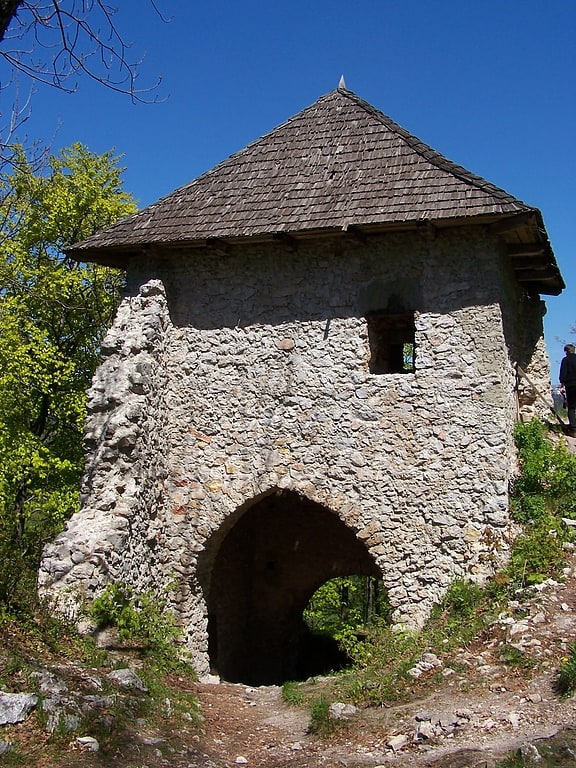
Also known as: Muránsky hrad
Castle in Muráň, Slovakia. Muráň Castle, is a ruin of a medieval castle above the village of Muráň, in the Muránska planina National Park in Slovakia. The castle is noteworthy for its unusually high elevation of 935 m, making it the third highest castle in Slovakia. It also figures in several romantic legends about its owners. Murány Castle was built in the 13th century on a cliff overlooking a regional trade route. Its name was mentioned for the first time in 1271, when Stephen V of Hungary ceded the castle to Gunig comes.
One of its owners, the robber baron Mátyás Basó (or Bacsó, in Slovak: Matúš Bašo), transformed the castle into a stronghold of bandits who robbed merchants and looted villages. After a siege by the royal army, the castle fell in 1548 and Basó was executed. One of the oldest Slovak songs, "The Song About The Castle of Muráň", written by Martin Bošňák describes this battle.
Another owner was Mária Széchy, better known as "The Venus of Murány". This independent woman divorced her second husband to marry the love of her life, magnate Ferenc Wesselényi, the subsequent Palatine of Hungary. When Wesselényi was besieging Murány Castle, which was occupied by her relatives at the time, she managed to get his soldiers inside through trickery. In 1666, Wesselényi organized a failed coup against Leopold I, but he died before any major confrontation. Subsequently, Mária Széchy bravely led a defense of the castle against imperial troops. Outnumbered, she eventually surrendered to Charles of Lorraine in 1670.
After the Treaty of Szatmár, the importance of the castle declined, as did its general condition. It was damaged twice in the 18th century by fire, in 1702 and in 1760.
The area was part of Gömör, then Gömör és Kishont County of Hungary. In 1920, under the terms of the Treaty of Trianon it became part of the newly formed Czechoslovakia.[43]
Cathedral of Saint John the Baptist, Prešov
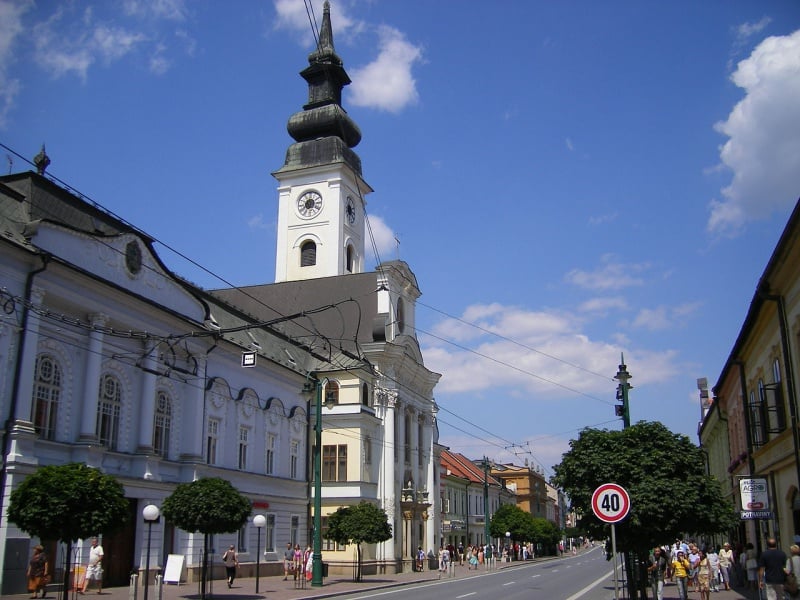
Also known as: Chrám svätého Jána Krstiteľa
Cathedral in Prešov, Slovakia. The Cathedral of Saint John the Baptist in Prešov is a Greek Catholic cathedral, the seat of Archbishop of Prešov and the metropolitan church of Slovak Greek Catholic Province. Former eparchy bishops and martyrs Pavol Gojdič and Vasiľ Hopko are buried here. In temple also is the copy of Shroud of Turin.[44]
Address: Hlavna 2871/1, Prešov
Wooden articular church in Kežmarok, Kežmarok

Also known as: Kostol Najsvätejšej Trojice
Evangelical church in Kežmarok, Slovakia. The Wooden articular church in Kežmarok is a wooden church in Kežmarok, Slovakia. The local Lutherans built it during a period of religious persecution, when they were allowed to erect only wooden churches. That is why even nails were made exclusively of wood. The construction was financially supported by Protestants from various countries, including Sweden and Denmark.
The only stone part of the church is its sacristy, originally built in 1593 as a pub outside the city walls. In the 17th century, the Roman Catholic dynasty of Habsburgs persecuted Protestantism in the Habsburg monarchy, which included territory of present Slovakia at that time. The number of churches was limited to one in each free royal town, Kežmarok being one of them. The construction material had to be the cheapest possible (wood at that time) and a church had to be completed in 365 days. Furthermore, the site of a new Protestant church had to be chosen by a royal commission. In Kežmarok, a royal commission deliberately chose an ancient pub as a place of worship, in order to humiliate the local Protestant community. The pub was subsequently incorporated into a hastily constructed religious building as a sacristy.
The oldest parts are an epitaph from 1688 and a Renaissance baptistery from 1690. They are the only remaining parts of the first church. The second wooden church, erected in the Baroque style in 1717, completely replaced the first building. It has the shape of an equal-armed Greek cross. The space can accommodate 1,541 worshipers. According to a legend, circular windows were made by Swedish sailors contributing to the construction. The organ, completed in 1729, is known for its perfect sound despite having only wooden pipes.
The church has been protected by the state as an important historical monument since 1892. In 1985, the Slovak National Council (parliament) proclaimed it a National Historical Monument. An expensive reconstruction followed in the 1990s.
The church is one of only five Lutheran wooden churches remaining in Slovakia. The others are situated in Hronsek, Istebné, Leštiny, and Svätý Kríž near Liptovská Mara.[45]
Address: Hviezdoslavova 18, 060 01 Kezmarok
Smolenice Castle, Little Carpathians Protected Landscape Area

Also known as: Smolenický zámok
Castle in Smolenice, Slovakia. Smolenice Castle is a castle in the eastern slope of the Little Carpathians, near the town of Smolenice, Slovakia.[46]
Address: Zamocka 18, 919 04 Smolenice
Old Town Hall, Levoča

Museum. The Old Town Hall in the UNESCO World Heritage town of Levoča was originally built in the 15th century, and stands in the town's main square.
The original gothic building was destroyed in 1550 during a fire which ravaged the town, and only fragments of the original walls were preserved. It was further damaged by a fire in 1599. The town hall in its existing form was built in 1615 in a Renaissance style, with arcades on the ground and first floors, and a belfry was added in 1656–61. Wall-paintings on the southern facade represent the virtues of moderation, care, bravery, patience and justice. The whole was later reconstructed in 1893–95.
The building is now maintained by the Spiš Museum, Levoča a department of the Slovak National Museum. It contains the original town council chamber and a variety of exhibits relating to the town's history, including a popular 19th-century painting of the "White Lady", Juliana Géciová-Korponaiová, (1680-1714) who according to (inaccurate) legend betrayed the town to troops of the Austrian Empire in the early 18th century.[47]
Address: Namestie majstra Pavla 4, 054 01 Levoca
Basilica of the Visitation of the Blessed Virgin Mary, Levoča
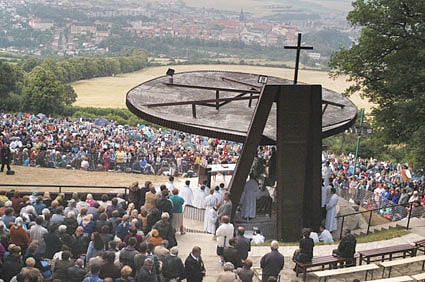
Also known as: Bazilika Navštívenia Panny Márie na Mariánskej hore
Catholic church in Levoča, Slovakia. The Basilica of the Visitation of the Blessed Virgin Mary in Levoča, Slovakia is located at the summit of Mariánska hora, a hill above Levoča with views over the town and countryside. Built in its present form between 1906 and 1922, the church is the destination of an annual major pilgrimage.[48]
Slovak National Library, Martin
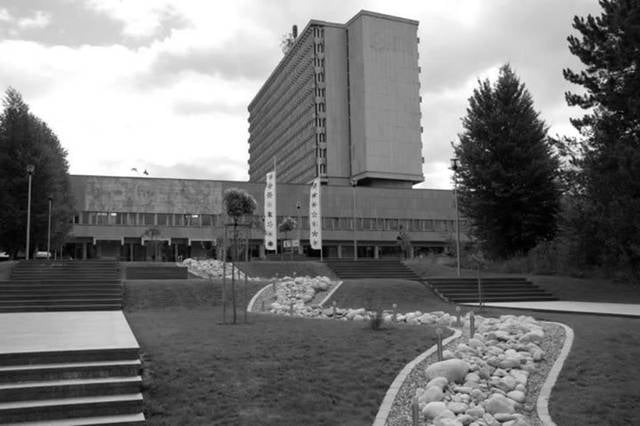
Educational institution. The Slovenská národná knižnica is a modern scientific, cultural, information and educational institution that serves all citizens of Slovakia and users from abroad. Slovak National Library is conservation and depositary library of Slovakia. SNL preferably collects, professionally processes, stores, protects and makes accessible domestic and foreign Slavic documents. Funds and collections of the Slovak National Library contain 4.9 million library items, 1.7 million archive documents and thousands of museum units.
Part of the SNL are also museums. Literary Museum collects objects related to Slovak literature, on which it presents a historical development of Slovak literature. Museum is also involved in presentation of the National Cemetery, gallery of graves of outstanding personalities from Slovak cultural, scientific and national life. Slavic Museum of Alexander Sergeyevich Pushkin, located in manor-house of Pushkin family in Brodzany, dedicated to one of the greatest Russian poets, documents literary relations between Slovak and Slavic literatures. SNL also manages the historical library of the Apponyi family, located in Oponice castle.
Slovak National Library coordinated the development of the library system of the Slovak republic and provides modernization of library and information services. SNL directly cooperates with slovak and foreign institutions on international projects solutions. In 2010 the SNL became a solver of national project Digital Library and Digital Archive (DIKDA) co-funded by the European Regional Development Fund (ERDF). Through the DIKDA project SNL makes public digitized works from its collections.[49]
Address: Námestie J. C. Hronského 1, Martin
Saint Nicolas Church, Trnava
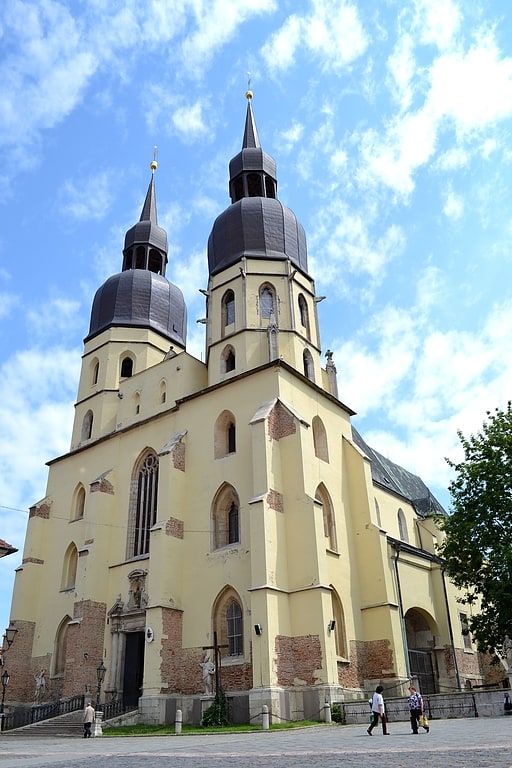
Also known as: Bazilika svätého Mikuláša
Basilica in Trnava, Slovakia. Saint Nicolas Church is a Gothic cathedral in Trnava, Slovakia. It was built between 1380 and 1421. The church is 60m long, 31 m wide, its sanctuary was 17,3m and the nave 18m high. The architecturally homogeneous Gothic basilica type temple, whose nave is nearby twice as high as the aisles, bears marks of the Danube style. The sanctuary of this massive brick structure faces east. Buttresses supporting the high walls alternate with Gothic windows decorated with original stone traceries. The largest Gothic window, adorned with rich traceries and stained glass, is at the church front.
Romanian-Hungarian humanist and scholar Nicolaus Olahus (Nicholas, the Vlach) and Croatian cardinal, diplomat and writer Antun Vrančić are buried in the church.[50]
Address: 385/1 Námestie sv. Mikuláša, Trnava